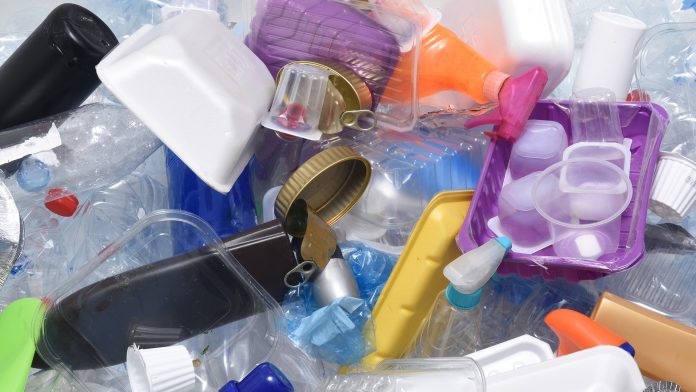Researchers have analysed the chemicals in plastics worldwide, discovering surprisingly excessive levels of substances of potential concern deliberately used in everyday plastic products.
The team from ETH Zurich found that there are more potentially hazardous chemicals in plastics than there was previously thought; this affects recycling processes, and the lack of transparency restricts the capacity to manage these chemicals.
Plastic is useful, inexpensive, and ubiquitous; each year, over 350 million tonnes are produced worldwide. These plastics are comprised of a massive selection of chemicals that could be released during their lifecycles, which includes elements that present a considerable threat to both humans and the environment. However, just a small fraction of the chemicals contained in plastic are widely known or have been comprehensively examined.
Now, in an unprecedented study, a group of researchers led by Stefanie Hellweg, ETH Zurich Professor of Ecological Systems Design, has assembled an extensive database of plastic monomers, additives, and processing aids for use in the manufacture and processing of plastics on the world market, and methodically categorised them on the basis of usage patterns and hazard potential.
The researchers’ findings, which have been published in the scientific journal Environmental Science & Technology, offer an informative but troubling insight into the chemicals that are deliberately added to plastics.
Results indicate a high level of chemical diversity in plastics
The group discovered approximately 10,500 chemicals in plastic. Many of these are used in packaging (2,489), textiles (2,429) and food-contact applications (2,109); whereas, some are for toys (522) and medical devices, including masks (247). Of the 10,500 substances detected by the researchers, 2,480 – 24% – were classified as substances of potential concern.
“This means that almost a quarter of all the chemicals used in plastic are either highly stable, accumulate in organisms or are toxic. These substances are often toxic to aquatic life, cause cancer or damage specific organs,” explained Helene Wiesinger, doctoral student at the Chair of Ecological Systems Design and lead author of the study. “It is particularly striking that many of the questionable substances are barely regulated or are ambiguously described,” continued Wiesinger.
In fact, 53% of all the substances of potential concern are not regulated in the US, the EU or Japan, and even more worryingly, 901 hazardous substances are permitted for use in food contact plastics in these regions. Lastly, scientific studies are absent for approximately 10% of the detected substances of potential concern.
Plastics are composed of organic polymers constructed from repeating monomer units. A wide variety of additives, such as antioxidants, plasticisers, and flame retardants, give the polymer matrix the desired properties. Catalysts, solvents, and other chemicals are also used as processing aids in the manufacturing process.
“Until now, research, industry and regulators have mainly concentrated on a limited number of dangerous chemicals known to be present in plastics,” said Wiesinger.
“The unexpectedly high number of substances of potential concern is worrying,” added Zhanyun Wang, senior scientist in Hellweg’s group.
Being exposed to such substances may have a damaging effect on the health of consumers, workers and on polluted ecosystems. Problematic chemicals can also negatively impact recycling processes and the safety and quality of recycled plastics.
Wang highlighted that even more chemicals in plastics could be problematic. “Recorded hazard data are often limited and scattered. For 4,100 or 39% of all the substances we identified, we were not able to categorise them due to a lack of hazard classifications” he explained.
Inefficient data and transparency
The researchers determined that the lack of transparency of what chemicals are present in plastics, as well as diffused databases as the central challenges. In two and a half years of research, the team examined more than 190 publicly available data sources from research, industry and authorities and identified 60 sources with adequate information about intentionally added substances in plastics.
“We found multiple critical knowledge and data gaps, in particular for the substances and their actual uses. This ultimately hinders consumers’ choice of safe plastic products”, they added.
Going forward, Wiesinger and Wang are working towards achieving a sustainable circular economy of plastics. They understand that there is a critical necessity for efficient global chemicals management, with a transparent and independent system to manage all hazardous substances in full. The researchers concluded that simple and accessible access to dependable information is vital.








